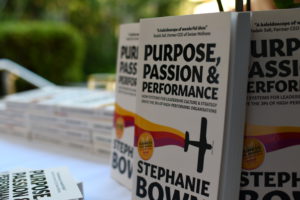RAISING THE BAR
In my Swisse Wellness days, whenever someone delivered a great outcome or demonstrated exceptional effort… we used to call it out by saying “that’s benchmark”!
“Benchmark” was a word we used regularly. It was a word that meant – you’re setting a new standard of great performance.
Having standards and expectations for how we work and what we deliver are essential to building high performance cultures.
Equally important – is constant encouragement and reinforcement to meet those standards and expectations.
It’s a bit like high jump. Did you ever try this at school? Do you remember how many times you needed to take a run at it to successfully jump over the bar without knocking it off its perch? If you’re anything like me – probably a couple.
I remember feeling a little disappointed each time I failed. But my teacher encouraged me to keep trying. Nothing beats that feeling of happy surprise of finally making it!
And then – we go right ahead and raise the bar! Of course we do – that’s how we keep getting better.
The same goes for humans at work. We don’t just let each other off the hook when we don’t meet an expectation. We stop, coach, and encourage each other to keep trying. This builds confidence, experience, learning and capability. It’s iterative. Eventually we make it. And then we set a new bar –this is the very definition of growth
Leaders set standards. Standards for themselves, standards for others. They don’t let us off the hook. Instead, they show up, lean in, and believe in our capacity for growth. They are not afraid of having the tough conversations. Instead – they see these conversations as opportunities to deepen trust and respect.
In my book, Purpose, Passion & Performance I explore the importance of setting clear standards further in Chapter 7

The importance of clear standards
Chapter 7, P69-70
Purpose, Passion & Performance by Stephanie Bown – download FREE chapter here
Setting standards is about being clear on the outcomes for performance; but not being prescriptive about how to get there. It’s about pointing the direction you want people to go; but letting them navigate their own path. This can at first seem paradoxical. How can you exert control as a leader over an outcome without controlling the way that outcome is achieved?
In First, Break All the Rules, Marcus Buckingham and Curt Coffman discuss this dilemma that many leaders and managers face; the dilemma of needing to deliver performance without controlling how people get there. The solution they say is ‘define the right outcomes and then let each person find his own route toward those outcomes’. To create high performance, it is necessary to expect high standards. But allowing people the opportunity to find what Buckingham refers to as ‘their path of least resistance’ creates an environment that excites talented people to learn, grow and improve in the achievement of set standards.